The Loop
Tracking golf history with Google's amazing time machine
I first used Google Earth in 2004, before it was Google Earth. At the time, it was a subscription service called Keyhole Earth Viewer, and I used it while working on an article for the New Yorker about golf courses in New York City. Then Google bought Keyhole. It renamed Earth Viewer, and improved it, and made it free, and has continued to improve it. One of its coolest features is Historical Imagery, which lets you travel back in time by cycling through earlier images of whatever you're looking at. For example, here's what Augusta National looked like last February, from a little over 7,000 feet up:
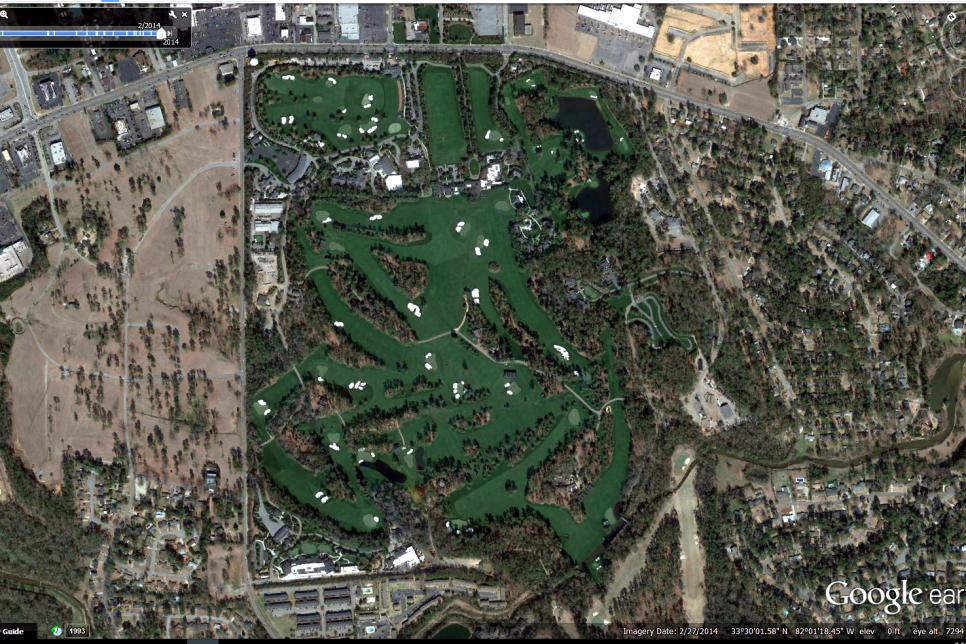
And here's what it looked like from the same altitude in November 2002, when the enormous tournament parking lot, to the left of the golf course in the picture above, was still a residential neighborhood (before the club bought all the houses and tore them down):
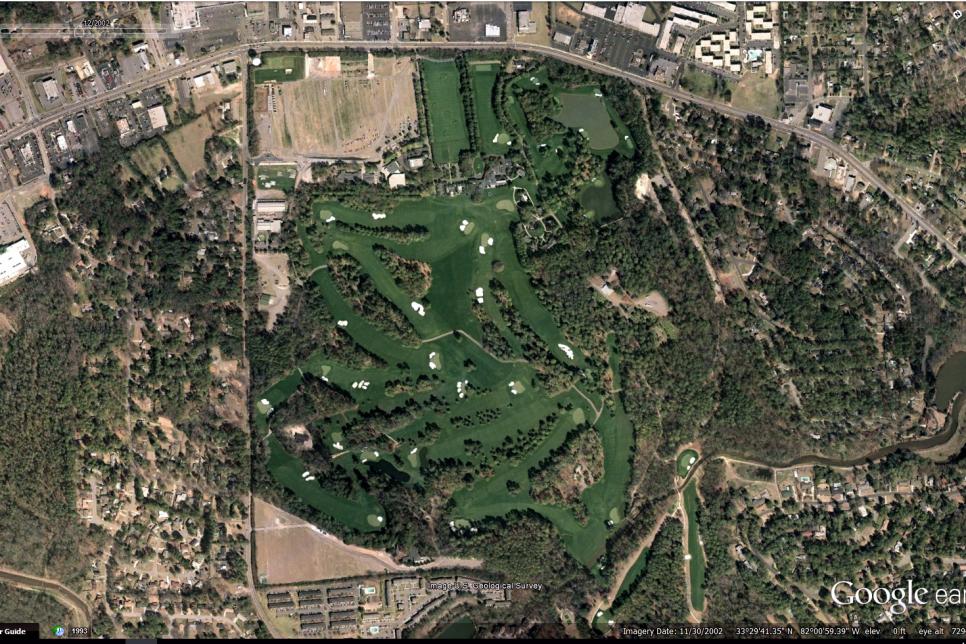
And here's what it looked like in February 1993, two months before Bernhard Langer won for the second time, by four strokes over Chip Beck -- who, you will recall, laid up on No. 15:
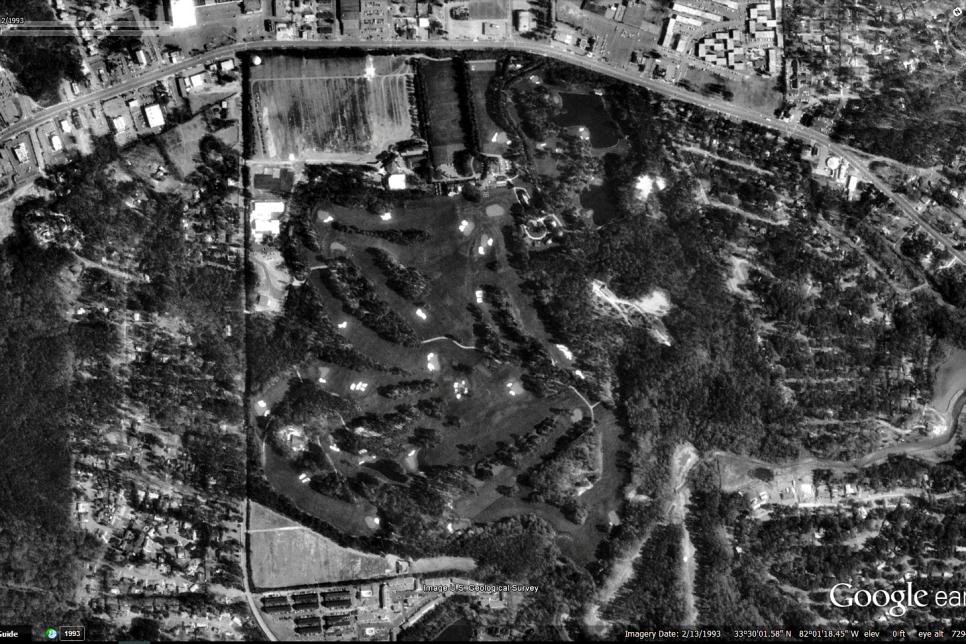
You can drill down, to study specific changes to the course. For example, here's what the practice area looked like last year:
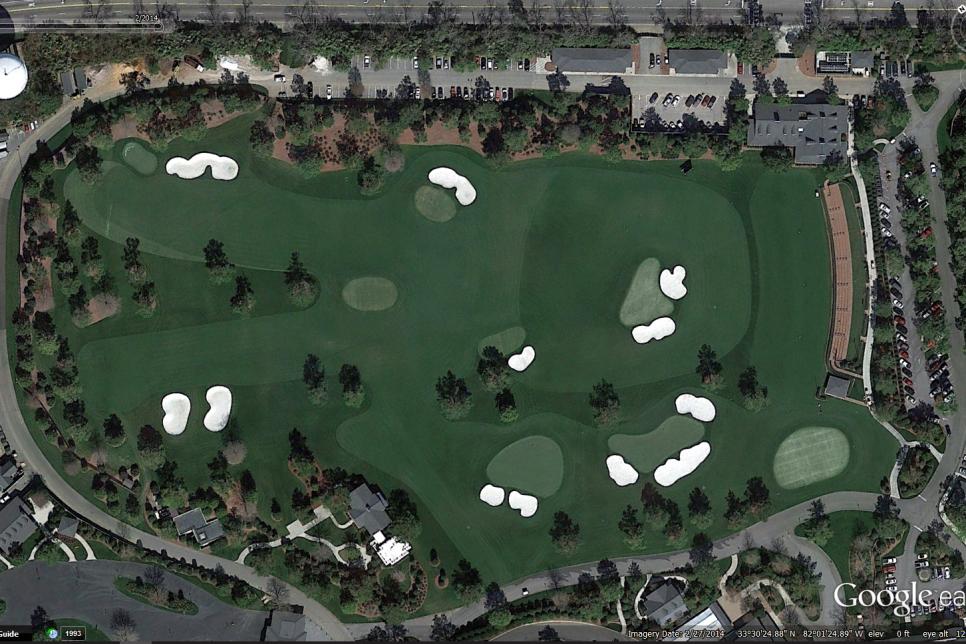
And here's what it looked in 2009, when the club was building it:
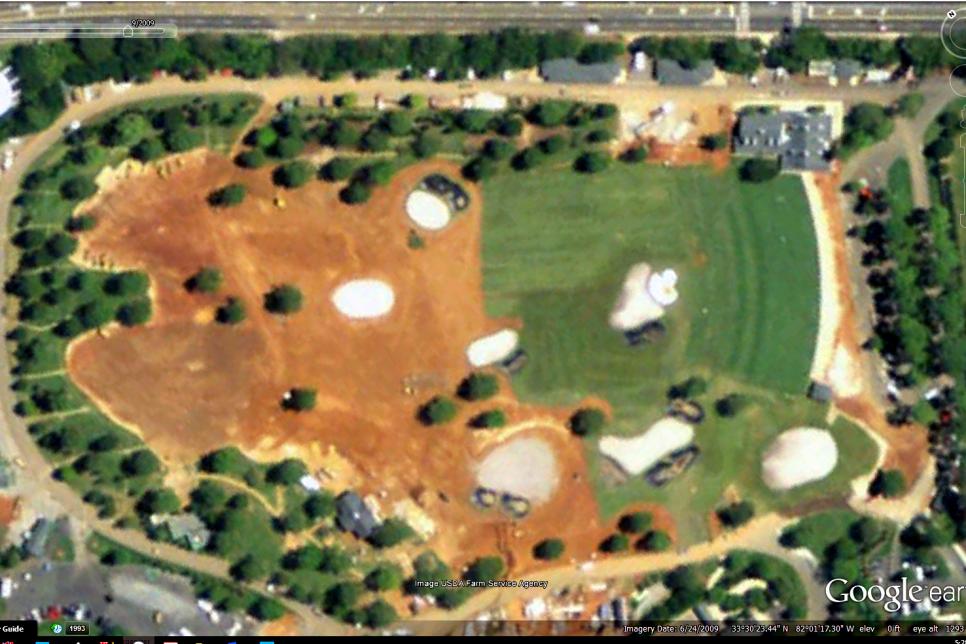
And here's what it looked like in 2002, when it was the (original) tournament parking lot:
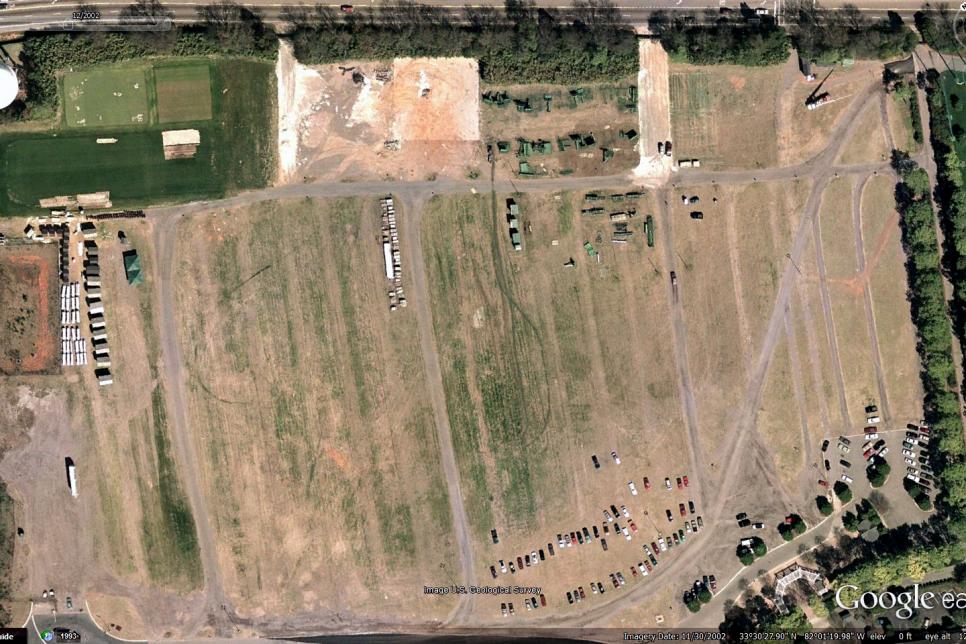
Historical Imagery is a terrific time waster if you've got work or chores to do. Here's the seventeenth fairway in 2013, when the Eisenhower Tree (which I've helpfully labeled) was alive and well:
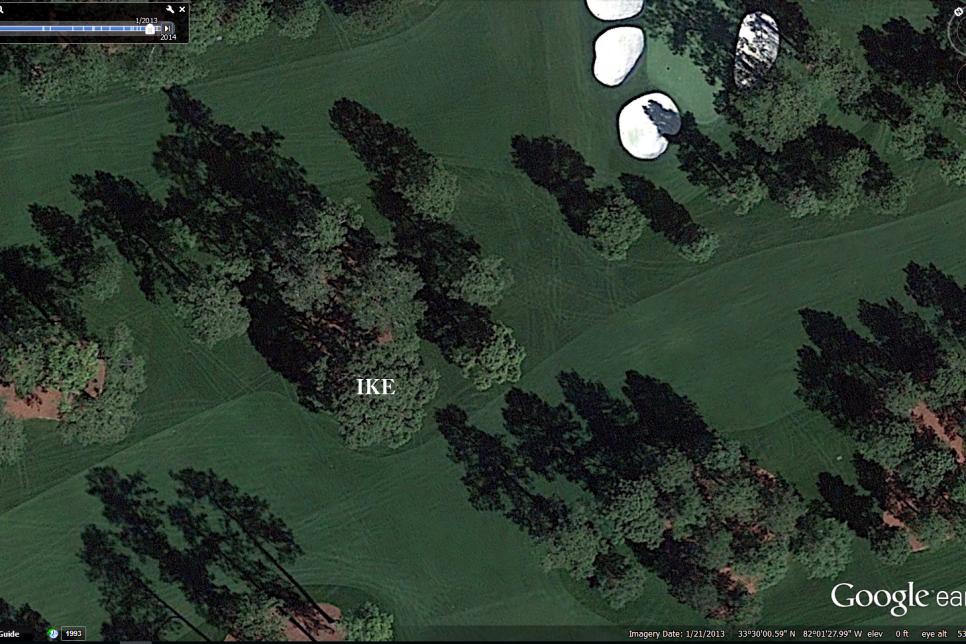
And here's what it looked like last year, when the Eisenhower Tree was dead and gone. (The bunkers in the upper-right-hand corner are next to the green on No. 7.)
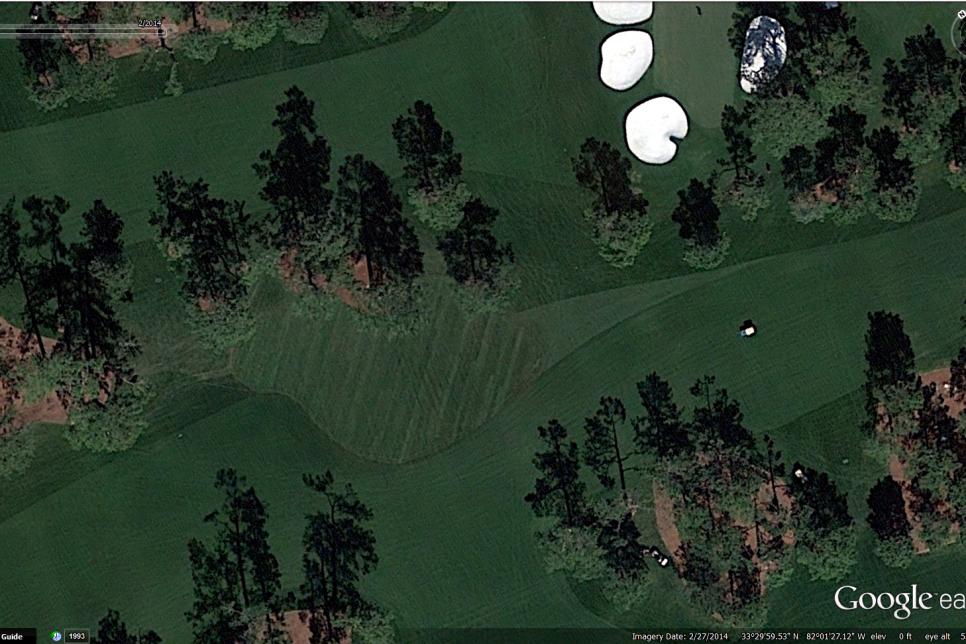
Why do anything else when you've got a toy like this to play with? To learn how Historical Imagery works, go here.

